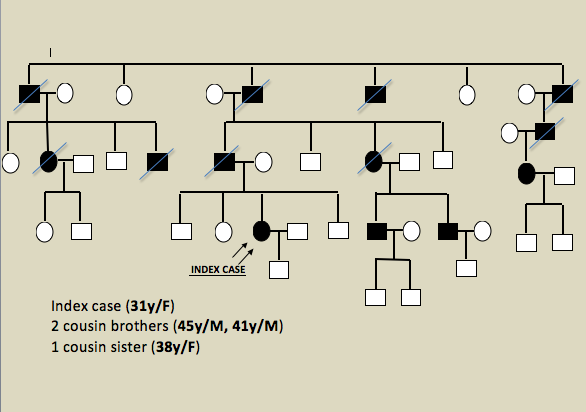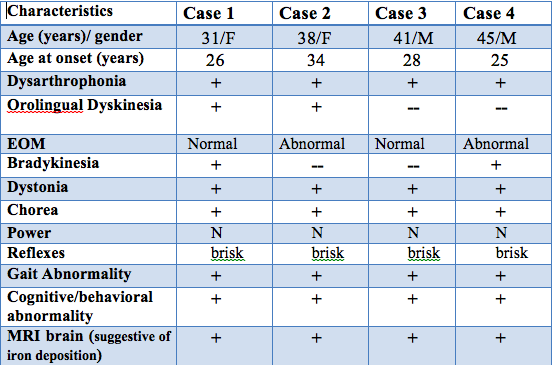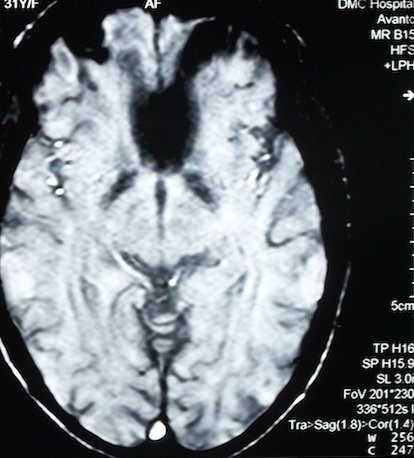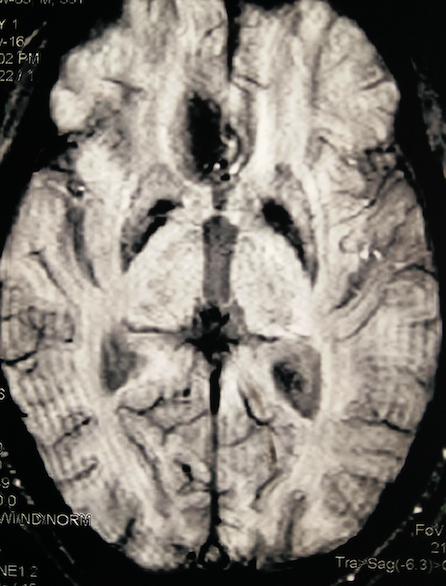Session Information
Date: Wednesday, June 7, 2017
Session Title: Choreas (Non-Huntington’s Disease)
Session Time: 1:15pm-2:45pm
Location: Exhibit Hall C
Objective: The abstract provides description of first case report of two Indian families with Neuroferritinopathy (NFT) pedigree.
Background: NFT is a rare autosomal dominant movement disorder caused by mutations in the ferritin light chain gene. It is the only NBIA subtype, which is autosomal dominant, characterised by variable clinical presentation including chorea, athetosis, dystonia, parkinsonism, cognitive decline and psychiatric symptoms. To date, few families have been described from England and France. We describe here two families from India with NFT pedigree.
Methods: case work up
Results: Family 1: A 31 year old female presented with complaints of abnormal movements for last 5 years, starting in her right leg and progressing rapidly to other limbs. She had unsteadiness while walking and a recent change in her behavior. There is no history of consanguineous marriage in the family. A dominant inheritance with total 13 affected members and 4 presently living with the disease were noted in pedigree (Figure 1). Mean mini-mental examination was 21/30 with frontal dysexecutive type dementia. She has mild dysarthrophonia with generalised choleric movements. She has brisk tendon reflexes with bradykinesia. Laboratory blood tests were normal and MRI brain revealed hypointensity in the globus pallidus, substantia nigra and dentate nuclei on SWI (Figure2). Further, her 3 other family members with similar symptoms were evaluated. (Table 1)
Family 2: 33 year old carpenter presented to us with complaints of abnormal body movements for last 4 years. He had hoarseness of voice with difficulty in swallowing and a recent change in his behaviour. With normal birth history and developmental milestones, there is no consanguineous marriage in the family. The family pedigree showed dominant pattern with 5 members living with this familial neurodegenerative disease. Higher mental function examination suggested frontal dysexecutive type dementia. Generalised choreic movements were noted with oromandibular dyskinesia, palatal tremor and dysarthrophonia. In eye movements, blepharospasm with hypometric saccades was noted. Muscle tone and strength was normal with brisk tendon reflexes and bradykinesia. MRI brain revealed symmetrical hypointensity in bilateral globus pallidus on SWI-MRI (Figure 3). Further, his cousin sister with similar symptoms was evaluated.
Conclusions: To the best of our knowledge,this is the first case report of two large Indian families with NFT pedigree.
References:
- Patrick F. Chinnery, Douglas E. Crompton, Daniel Birchall, Margaret J. Jackson. Clinical features and natural history of neuroferritinopathy caused by the FTL1 460InsA mutation. Brain (2007), 130, 110-119.
To cite this abstract in AMA style:
J. Kaur, G. Singh, B. Paul. Neuroferritinopathy pedigree in 2 families from India [abstract]. Mov Disord. 2017; 32 (suppl 2). https://www.mdsabstracts.org/abstract/neuroferritinopathy-pedigree-in-2-families-from-india/. Accessed April 24, 2025.« Back to 2017 International Congress
MDS Abstracts - https://www.mdsabstracts.org/abstract/neuroferritinopathy-pedigree-in-2-families-from-india/




